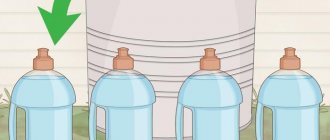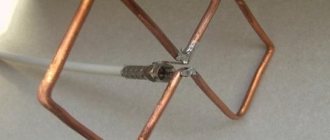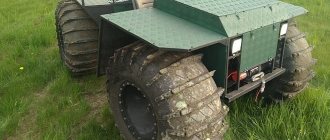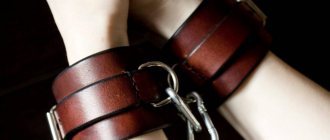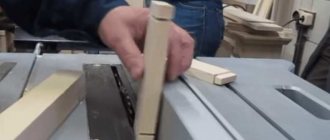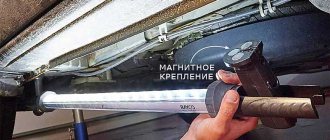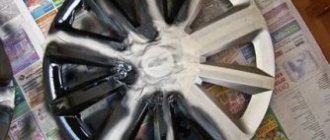All changes made to the design of the car must be tested for compliance with safety requirements. The procedure for making changes is defined in Decree of the Government of the Russian Federation No. 413, which is valid from July 1, 2022.
In the article we will look at:
- What is not considered a modification to the design of a car?
- What changes require official registration?
- How to register changes to a design
- What is a register of technical examination reports?
- List of regulatory documents
- What liability is provided for violations?
What is not considered a change to the design of a car?
A change in the design of a car is the installation or replacement of parts with spare parts not provided by the manufacturer.
For each car, the manufacturer prescribes technical documentation. It states:
- What spare parts can replace factory parts. When searching for a part by VIN, spare parts catalogs provide not only original components, but also replacements that the car manufacturer allows for installation.
- What additional components can be installed on the car. For example, the manufacturer may indicate in the vehicle manual that a towbar can be installed.
Any replacement of spare parts, components and assemblies that are specified in the manufacturer’s operational documentation does not constitute changes to the design. There is no need to coordinate such work.
Let’s say that the technical documentation for the Chevrolet Niva states that it is possible to install towing devices on the car. The manufacturer recommends purchasing original parts. If the part's passport indicates that it is intended for the Niva, it can be installed without additional approvals.
The part is intended specifically for the Chevrolet Niva; there is a corresponding mark in the passport.
Installing this spare part on a Niva is not considered a change in design. If the owner installs a towbar on the car that is not intended for it, this is already considered a change in design. For example, on the Niva from our example you cannot install a “self-welded” tow bar without additional permits. Before installation, the part must be tested and receive a safety certificate.
Nostalgia
Just some 20 years ago, I myself drove a Lada-2108, drove it to the race watch and “saved” money for all kinds of “tuning”. I dreamed of Recaro sports seats, ventilated Brembo brakes, and always with red calipers, of “chip tuning” and converting the rear brakes from drum to disc.
I had tint, I even had a backlight kit that I never installed. “Zero resistance air filter” is nonsense, but how fashionable it sounds!
Do you know what was the first thing I bought after buying a car? Of course, alloy wheels. And my wife (at that time just my girlfriend) for some holiday like February 23rd gave him heated and illuminated washer nozzles (the fashionable thing was downright creepy).
And then my friend and I independently opened the door trim to install electric windows, which were not installed in the “eight”. We cut a hole for the button ourselves. And, of course, the lift for the “eight” was only a scissor lift; only suckers installed a cable lift on the “eight”, because the glass was large and heavy, and cable lifts often warped the glass.
S. Domuschiy
The only thing I didn’t dream of was a direct-flow muffler to make an obscene sound. After that there was music - first a high-quality head, then cables, then an amplifier and, finally, a subwoofer. This whole constructor had to be selected first, then bought (and it cost a lot), then connected. And we did all this ourselves, somewhere we assembled something, somewhere we read something, somewhere we soldered something, and so on. Anyway, this is where the nostalgia post ends.
Which changes require verification and paperwork, and which do not?
Appendix 9 of the Technical Regulations of the Customs Union lists the typical, most common changes to the design:
- Everything related to the equipment or retrofitting of trucks: changing the type of body, installing additional fuel tanks, installing winches and hydraulic lifts, etc.
- Installation of gas equipment.
- Replacing headlights with changing the class of the light source. For example, replacing halogen headlights with xenon ones.
- Re-equipment of cars to enable disabled people to drive them.
- Conversion of a car into an ambulance.
All these changes must be checked for compliance with safety requirements and notes on the conversion must be included in the documents.
In addition to the above, a change in design is considered to be the installation of parts not provided by the manufacturer that affect driving safety. For example:
- replacing the engine with an engine with different characteristics,
- making changes to the brake system,
- suspension lift or lowering,
- off-road tuning: installation of non-standard power bumpers, winches, off-road wheels.
Such changes are also subject to mandatory verification and registration.
Using examples, we will analyze the nuances of two popular changes to the design:
Converting a car to gas
You can switch your car to gas if experts and the traffic police conclude that this is acceptable for your car.
When switching to gas, you need to pay attention to the location of the filling fitting. For propane, it is recommended to install it on the gas filler door, bumper, or under the bumper. Cannot be installed under the hood or in the trunk. When converting to methane, you can install a fitting under the hood, but only on the side opposite the battery.
You must contact certified centers for translation. The service station must install and issue a declaration from the manufacturer of the installation of equipment for supplying the engine with gaseous fuel to the vehicle.
SUV tuning
According to the general rules, tuning can be done if the traffic police issues permission for it. In practice, most changes are prohibited.
- “Power bumper” - you can install it, but registration is required. And only a part that has a certificate of conformity will do.
- “Kenguryatniki” (metal arcs on which additional lighting equipment is attached) - there is no direct ban on them, but the Technical Regulations of the Customs Union prohibit the installation of steel parts that protrude forward relative to the bumper line. So in practice, the traffic police almost always prohibits conversion.
- Winches can be installed, but must be registered. The winch can go beyond the bumper only if it is covered with a protective element with a radius of curvature of less than 2.5 mm
- Kungs for pickup trucks (lids that cover the body) can be installed and do not even need to be registered if the lid is removable. But it can only be welded to the body with permission from the traffic police.
- Wheels with a large diameter can be installed without approval, but there are limits. The limits are set by the manufacturer - for example, for some UAZ vehicles up to 8 types of wheels are allowed, but only 3 types can be installed on the Land Cruiser 200. If the wheel is larger or smaller than the dimensions allowed by the manufacturer, you must undergo a safety check. During installation, the speedometer will need to be calibrated so that it shows the actual speed of the car.
Check the organization's fines
I want a station wagon!
GAZ-M20 Pobeda station wagon. The factory didn't make these
GAZ-M20 Pobeda station wagon. The factory didn't make these
And in the USSR there was always a shortage of station wagons. Their production for many years, especially before the appearance of the VAZ-2102, was small, and it was almost impossible to buy Volga GAZ-22 and GAZ-24-02. The craftsmen boldly took on the solution here too. The hybrid of Pobeda and Volga GAZ-22 even looked nice. The car, of course, resembled the Polish Warszawa, which, unlike our Pobeda, had a serial cargo-passenger modification.
Moskvich-400 - station wagon
Moskvich-400 - station wagon
A station wagon based on the Moskvich-400 - Moskvtch-400-421 - unfortunately did not become serial. Private owners have also learned to fill this gap with the help of improvised materials and welding. A part from the serial Moskvich-423 station wagon was perfect as a trunk door.
Five-seater van based on the Volga GAZ-24
Five-seater van based on the Volga GAZ-24
The shortage of GAZ-24-02 station wagons, with a certain imagination, courage and dexterity, could also be compensated by constructing a tall van with a full-size four-door saloon from a Volga sedan.
Two UAZs make one, but a very spacious one.
Two UAZs make one, but a very spacious one.
The rare GAZ-69s that fell into private hands were, as a rule, altered, replacing the awning with a hard top, more suitable for our climate. Most often they made cars that looked like police cars. Sometimes they used the rear door from the RAF-977. A more complex, but logical, roomy and attractive option is a combination of the front part of the GAZ-69 with the rear part of the UAZ “loaf”.
How to register changes to a design
Receive a preliminary technical examination report
This must be an organization that is included in the unified register of conformity assessment bodies of the Eurasian Economic Union.
You need to describe how you want to convert the car and bring the car for diagnostics. The commission will issue a preliminary conclusion on whether changes can be made to its design.
On average, an examination costs 3,500-8,000 rubles.
The conclusion is issued only for certain changes. If the driver has been approved to switch the car to gas, he will not be able to change the headlights at the same time. This will require a separate permit.
Obtain permission from the traffic police to make changes to the design
An application for changes to the design can be submitted through State Services. It's free.
The application must be accompanied by:
- a copy of the driver's passport;
- conclusion of the preliminary examination.
The traffic police will check the documents and history of the car. If a registration ban is imposed on the car, it will not be possible to formalize changes to the design.
Make the necessary changes
You can re-equip the car yourself, the main thing is to keep the certificates of conformity for each part.
Receive a vehicle safety inspection protocol
At this stage, you must contact the testing laboratory again. There they will evaluate the results of the changes and issue a safety inspection report for the car’s design. Without a protocol, it will not be possible to make changes to the PTS.
Pass inspection
The procedure is the same as for regular maintenance. Additionally you need to take with you:
- permission to make changes to the design from the traffic police;
- design safety inspection report issued by the testing laboratory.
Typically, a technical inspection costs from 500 to 1,500 rubles.
On the back of the diagnostic card it will be written down what changes have been made to the design of the car.
Obtain a SKTS certificate from the traffic police
SKTS is a certificate of compliance of a vehicle with changes made to its design with safety requirements. You can obtain it from the technical supervision department of the traffic police. You will need to bring:
- declaration of the work manufacturer,
- security check protocol,
- diagnostic card,
- permission for refurbishment.
The car must be brought in for inspection. Also, before visiting the traffic police, you need to pay a state fee - 800 rubles.
Make changes to PTS and STS
Within 10 days after receiving the SKTS, you must go through the vehicle registration procedure to make changes to the vehicle data. You need to bring:
- safety compliance certificate,
- PTS,
- STS
- OSAGO.
The traffic police will enter information about the conversion to STS and PTS. The state fee for replacing documents is 850 rubles.
Checking fines for legal entities
Try for free
Types of tuning
Modernizing a machine is a rather painstaking and labor-intensive task that requires time and financial investment. Therefore, tuning a car with your own hands at home must begin with setting a specific task and creating a clear action plan.
Preparing the car for tuning, checking it at a service station
Here it should be recalled that the following types of tuning are distinguished.
- Creating a recognizable and original exterior.
- Modernization of the interior space.
- Improved driving performance.
Which documents to refer to?
| Document title and link | What regulates |
| Decree of the Government of the Russian Federation dated 04/06/2019 N 413 (as amended on 04/28/2020) “On approval of the Rules for making changes to the design of wheeled vehicles in operation and subsequent verification of compliance with the requirements of the technical regulations of the Customs Union “On the safety of wheeled vehicles” | Establishes a general procedure for making changes to the design |
| Code of Administrative Offenses of the Russian Federation Article 12.5 Driving a vehicle in the presence of malfunctions or conditions under which the operation of vehicles is prohibited, or a vehicle on which the identification sign “Disabled” is illegally installed | Fines have been prescribed for driving a car with illegal modifications to its design. |
| Order of the Ministry of Internal Affairs of Russia of September 10, 2022 No. 612 “On approval of the Administrative Regulations of the Ministry of Internal Affairs of the Russian Federation for the provision of public services for issuing permission to make changes to the design of a wheeled vehicle in operation” | It is spelled out how the state service for issuing permission to make changes to the design of a wheeled vehicle in operation is provided |
| Order of the Ministry of Internal Affairs of Russia of September 10, 2022 No. 613 “On approval of the Administrative Regulations of the Ministry of Internal Affairs of the Russian Federation for the provision of public services for issuing a certificate of compliance of a vehicle with changes made to its design with safety requirements” | The procedure for issuing a certificate of compliance of a vehicle with changes made to its design with safety requirements is prescribed |
| Decision of the Customs Union Commission dated 09.12.2011 N 877 “On the adoption of the technical regulations of the Customs Union “On the safety of wheeled vehicles” | The document states which changes to the design cannot be made and which can be made. |
Checking fines for legal entities
Do you want to monitor fines, receive a daily report on new fines found and pay them?
Try for free
Hood tuning
Modification of the mentioned body element will provide the car with a stylish and recognizable appearance. Today, to improve the appearance of the hood, you can use several original and effective methods that are available, both financially and in terms of the necessary skills.
Covering the hood with carbon film, example
These include:
- deflector installation;
- installation of tuning “gills”;
- covering the surface with vinyl film.
What liability is provided for violations?
Fine for illegal changes to the design - 500 rubles
(Article 12.5 of the Code of Administrative Offenses of the Russian Federation).
If the inspector discovers that there are illegal changes in the design of the car, he will issue a requirement to eliminate them or register them. Information about this will be stored in the traffic police database. The driver must comply with the requirement within 10 days, otherwise the registration of the car will be stopped.
Don't miss new useful publications
We will tell you about the intricacies of the legislation, help you understand it and tell you what to do in controversial situations.
Optional equipment
During operation, car owners often install additional electrical equipment:
Integrating them adds wiring to the vehicle and also puts stress on the electrical system. Moreover, a number of “new” electricity consumers cannot be switched off, for example, alarm systems, which means that the likelihood of rapid battery discharge becomes very important.
If your car begins to have difficulty starting after a long period of parking, then you should determine the cause of the current leak. A multifunctional device switched to ammeter mode will also help you find a leak.
Tip: Don’t forget to set the measurement range to 10 Amps, since the current in the car’s on-board network is constant.
